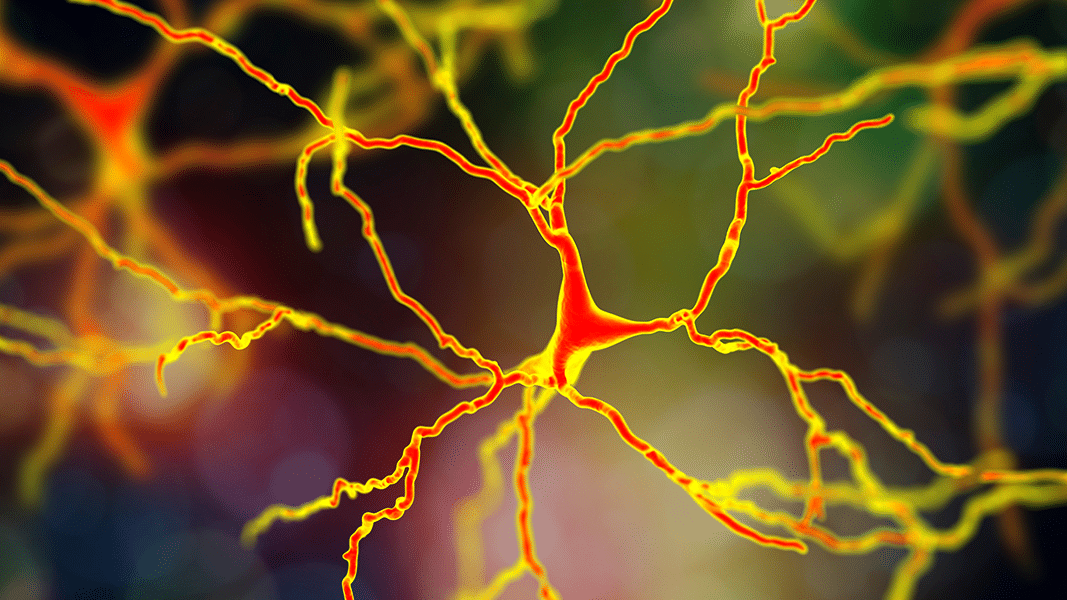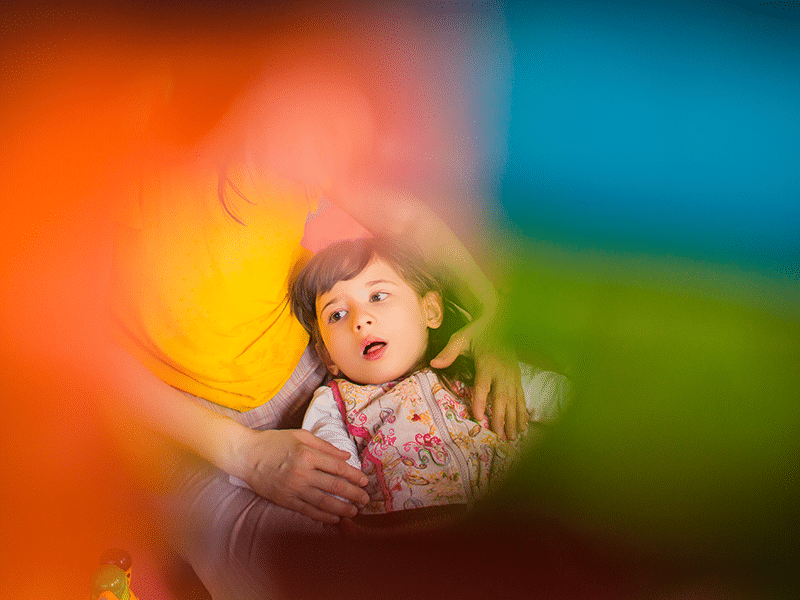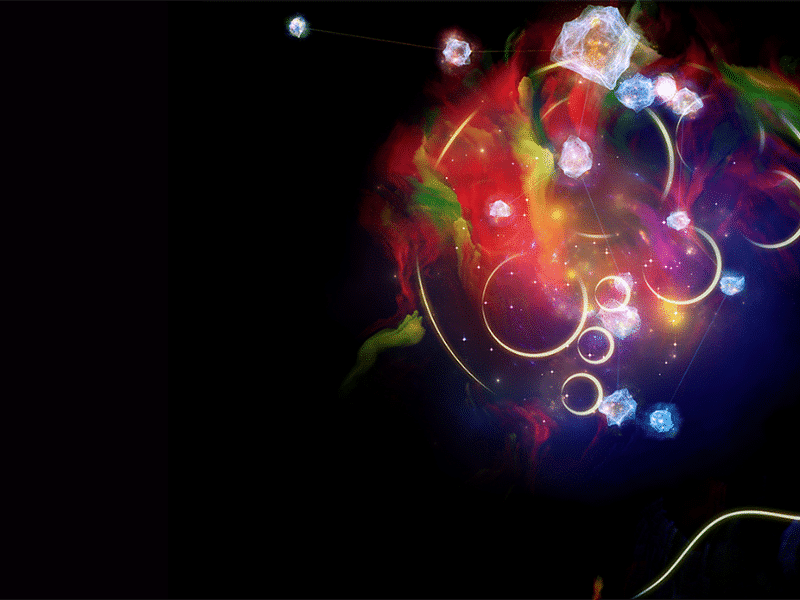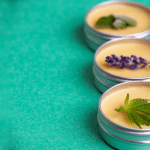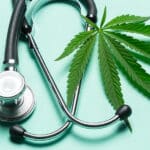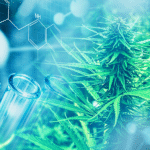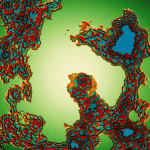Autism spectrum disorder (ASD) is a condition that divides opinions. A catch-all term to describe similar atypical behavioral traits such as restricted interests, repetitive behaviors, and difficulties in interacting with others, autism actually is somewhat more heterogeneous than us neurotypical folks might imagine.
The term spectrum is used to describe autism’s varying severity – from high functioning at one end to non-verbal and severely intellectually disabled at the other. But this rather linear definition of ASD falls short of encompassing the unique clusters of emotional, behavioral, and physical symptoms that many people with autism experience.
Perhaps that’s why the cannabis plant, itself complex in its composition, has been reported to not only bring improvement to many of the behavioral difficulties associated with ASD, but also ease some of the associated comorbid conditions, such as inflammatory bowel disease, sleep disorders, and epilepsy.
What is Autism?
Taking its origin from the Greek word ‘autos’ meaning self, the term autism was first used in the 1940s to describe children with behavioral traits we now recognise as ASD.
Little is known why ASD develops. Genetics may be a factor, as could having children later in life. A possible link between exposure to heavy metals during pregnancy has also been suggested.1 In some instances, children begin to exhibit signs of ASD around the age of two, leading to unproven theories that childhood vaccines could play a role.
But whatever the cause, parents suddenly find themselves struggling to cope with an evolving collection of behavioral traits and physical symptoms, often with little support or guidance from health professionals.
If their child is on the more severe end of the spectrum displaying self-injurious behavior or aggression to themselves or others, doctors often prescribe a cocktail of prescription drugs, such as antipsychotics, antidepressants or sedatives in a bid to prevent violent outbursts from taking place.
Comorbidities
As a greater understanding of ASD develops, physicians are beginning to realise that violent outbursts and self-injurious behavior can themselves be manifestations of underlying or undiagnosed health conditions.
Comorbidities – the existence of multiple disorders in one person at the same time – are common in ASD. Twenty percent of people with ASD also have epilepsy and other conditions, including gastrointestinal issues, anxiety, ADHD, sleep disturbances, and feeding difficulties.2
Some comorbidities are more obvious to observe than others. However, for a nonverbal child or adult experiencing pain, a sudden violent outburst can simply be their way of expressing discomfort.3 So, addressing the underlying cause of pain can often lead to an improvement in behavioral problems.
In ASD pain isn’t just caused by physical sensations. For Justin Clarke, who was diagnosed with autism as a university student, the sensory overload often experienced by people with autism, causes him mental pain, manifesting in the form of anxiety.
“Sensory derived pain is also pain,” he explains. “There’s a constant source of sensory anxiety simmering away in the background in my subconscious.” For Justin, reducing the sensory overload, in his case by using cannabis, calms his feelings of anxiety, allowing him to go about his daily activities – but more on that later.
Autism & the Endocannabinoid System
Scientists are beginning to suspect that an imbalance between excitatory glutamate and inhibitory GABA,4 both key neurotransmitters in neurodevelopment and general brain function, could account for many behavioral ASD traits, as well as common comorbidities, such as sleep disturbances and anxiety.
In simple terms, the message to the sympathetic nervous system to return to a state of rest and relaxation, simply isn’t getting through. A reduction in GABA tone has also been observed in numerous other diseases, including epilepsy, Alzheimer’s, schizophrenia, depression, and musculoskeletal disorders.5
As the body’s master homeostatic regulator, the endocannabinoid system ensures neural activity remains in balance by releasing endocannabinoids (anandamide and 2-AG) in a retrograde fashion where they bind post-synaptically to CB1 cannabinoid receptors. This includes modulating the neurological sweet spot between GABA and glutamate transmission, with 2-AG potentiating certain GABA receptors.6
While research into understanding autism tends to take a more reductionist approach by focussing on specific autism traits, it’s possible a more broad-reaching imbalance in the endocannabinoid system could explain why autism includes not only emotional and behavioral difficulties, but also GI issues, epilepsy, and sleep disturbances.
It’s well documented that endocannabinoid alterations contribute to the development of various psychiatric and neurological disorders,7 and thus it is plausible that endocannabinoid system dysregulation could also be a pivotal factor in the onset of autism.
Gene Expression Study
A gene expression study on postmortem brains of subjects with autism found they all shared reduced CB1 receptor expression,8 which would certainly impact the endocannabinoid system’s ability to maintain neurological homeostasis. Lower levels of anandamide (AEA), an endogenous cannabinoid, and kindred lipid signaling molecules N-palmitoylethanolamine (PEA) and N-oleoylethanolamine (OEA), were also noted in 93 autistic children,9 suggesting that some kind of endocannabinoid deficiency could be a contributing factor.
Other alterations in the endocannabinoid system are evident in autistic children, though it’s not clear whether this has a causative effect in ASD. In a study comparing CB2 cannabiniod receptor expression in autistic children with a healthy control group, those with ASD showed significant CB2 upregulation.10 It’s possible this increased CB2 expression is simply a compensatory action by the endocannabinoid system, acting to modulate the heightened inflammatory state often found in autism, and that selectively targeting the CB2 receptors could help ameliorate some of ASD symptoms and comorbidities caused by immune system dysregulation.
Anandamide, named after the Sanskrit word for bliss, is also being investigated as a pharmacological target for improving the impaired social functioning commonly associated with ASD. Using a mouse model of autism, scientists found that blocking the production of fatty acid amide hydrolase (FAAH), the enzyme that breaks down anandamide in the body, reversed the rodents’ marked social impairment.11
Scientists have also shown how oxytocin, the feel-good neuropeptide produced when we receive hugs, controls social reward by driving anandamide-mediated signaling at CB1 receptors.12 This observation led researchers to speculate that in ASD mice at least, impaired oxytocin-driven anandamide activity may play a role in the development of socially impaired behaviour.
It would seem then that understanding the endocannabinoid system’s significance in the development of autism could lead to a more holistic therapeutic approach for managing ASD patients’ complex clusters of behavioral difficulties and health disorders.
Cannabis & Autism – Yuval’s story
Compounds in the cannabis plant, in particular tetrahydrocannabinol (THC) and cannabidiol (CBD), are known to interact with the endocannabinoid system, which may explain why cannabis in its various guises appears to lessen the suffering of many children and adults with ASD.
Much like the headline-grabbing cases of children with severe epilepsy, it’s often the parents of children with severe autism who have gone most public about giving cannabis to their kids.
27-year-old Yuval from Israel has severe autism and is non-verbal. Growing up, the prescription meds prescribed by doctors to control his violent outbursts, self-injurious behavior, and high anxiety, did little to manage his behavior or improve his quality of life.
“I think people who don’t live with severe autism, can’t really understand what it means,” explains his mother Abigail Dar. “It’s life in the shadow of hell. You live with a person you adore and love, and he’s restless and he’s anxious and he shouts. And he goes up and down and you don’t understand what he wants. And he drives the whole house crazy, leaving aside the self-injury and meltdowns, just everyday daily things”.
When Abigail and her husband first contemplated giving Yuval cannabis, ASD was not a qualifying condition for medical cannabis in Israel (although pediatric epilepsy was). Thanks to Dar’s unrelenting campaigning, Yuval was eventually granted a prescription.
“It was like magic,” says Dar, describing the change cannabis brought about to Yuval’s quality of life. “My son became a calm person, more concentrated, having a smile on his face, and over a year, he didn’t show any self-injurious behaviour or any outbursts, which for me and for him is a miracle. It was life changing, you know you can spend time with him without being frightened all the time.”
In Yuval’s case, he responded best to a CBD-rich whole plant cannabis oil, vaporizing highTHC cannabis flower when he is agitated. CBD-dominant cannabis products witout THC tended to increase his hyperactivity and anxiety. However, some children can experience significant improvements with CBD oil alone.
For Some, CBD Oil is Enough – Niall’s story
Niall McCartney from Dublin, was just a one-year-old when a febrile convulsion changed his life forever. Any language he’d gained was lost and Niall appeared to retreat into a solitary world filled with anxiety and self-injurious behavior. He was eventually diagnosed with moderate autism, as well as ongoing seizure activity and an acquired brain injury caused by the initial seizure.
Desperate for solutions, mom Sharon scoured the internet, where she repeatedly saw reports of how cannabis oil brought relief to children with ASD. In Ireland, getting Niall a medical cannabis prescription was not an option, so Sharon and her husband decided to try CBD oil.
“The first thing was the self-injurious behaviour stopped,” remembers Sharon. “The head banging stopped… and then the hyperactivity stopped… So you could see his system calming down… all of these senses that were in total overload came down to a normal rate.”
But perhaps the most dramatic change came just nine days after starting with CBD oil, when Niall had his first ever conversation with his mum. “He said to me, ‘mammy, my head doesn’t hurt anymore and I’m not scared anymore,’” recalls Sharon. “That was the defining moment for me as his mother, that I just said that I’m never stopping this.”
Niall now 9, continues to make good progress, much of which Sharon attributes to the CBD oil he takes.
“It’s just life changing,” she says. “It has given Niall the chance to live a life and not exist in the world that he feels he doesn’t belong in… I never thought his life would be like this. I never thought he would have the quality of life that he has now.”
Cannabis as a Treatment for Autism – The Evidence
With CBD’s excellent safety record and significant body of research for pediatric epilepsy, it’s unsurprising the first clinical studies examining whether cannabis brings some relief to children with ASD have favored CBD-rich cannabis oils.
In the last couple of years, three studies have come out of Israel where approximately 2500 children and adults with ASD receive cannabinoid treatment from the national medical cannabis programme (much in part to Abigail Dar’s campaigning).
The first study sought to examine whether CBD oil would help ameliorate the four comorbidities commonly associated with ASD: hyperactivity symptoms, sleep problems, self-injury, and anxiety.13
53 children were given CBD-rich cannabis oil for an average period of 66 days. Approximately two thirds of the subjects experienced improvements in self-injury and rage attacks, hyperactivity, and sleep problems. Administering CBD improved anxiety in 47.1% of the children – although 23.5% found their anxiety had worsened. These findings, it should be noted, were largely reliant on the reports of parents, and their subjectivity must not be underestimated.
Retrospective Studies
Israeli scientists also conducted a retrospective study analysing the data of 188 children with ASD who were mostly given cannabis oil (30% CBD to 1.5% THC) over six months.14
Using a self-reported questionnaire format answered by parents or caregivers when subjects were unable to do so, the results once again were encouraging.
After six months of cannabis treatment, 30.1 percent of the participants reported a significant improvement in their condition, with a further 53.7 percent noting moderate benefits. Of crucial importance, only minimal side effects were noted.
Additionally, positive changes were also noted in quality-of-life markers, such as the ability to shower and dress independently. Remarkably, after six months, 84 percent of ASD subjects who had epilepsy reported a “disappearance of symptoms.”
The same year, Dr Adi Aran published another retrospective study15 with a smaller cohort of 60 children with ASD, this time using the Caregiver Global Impression of Change scale. The subjects were given a 20:1 CBD:THC cannabis oil over 7-13 months. Once again considerable improvement in behavior problems was noted in 61% of subjects, 39% improvement in anxiety, and 47% in communication difficulties. Most children were taking other medication alongside the cannabis, with 33% taking a lower dosage and 24% stopping their medication altogether by the end of the study.
Randomised Trial
Conscious of the limitations of his initial study, Dr Aran conducted a further proof-of-concept randomised trial for the use of cannabinoids as a treatment for autism, the results of which have just been published.
150 children and young adults with autism exhibiting moderate or severe behavioural problems were given either a whole plant cannabis oil containing a 20:1 ratio of CBD:THC, the same ratio of purified CBD and THC, or a placebo over twelve weeks. The aim of the study was not only to examine whether cannabinoids are more effective than a placebo at improving autism-associated symptoms, but also to see if whole plant CBD-rich cannabis was more effective in its outcomes than CBD and THC alone.
While it would appear the results haven’t been as conclusive as perhaps the researchers would have liked due to a strong placebo effect in the first period of the trial, in the Clinician’s Global Impression (CGI) questionnaire assessing improvements in the children’s disruptive behaviour, 49% of the participants had a positive response to the whole plant extract, 38% to the purified cannabinoids and 21% to the placebo. The whole plant extract also proved superior in the social responsiveness scores.16
Several other clinical trials for CBD and ASD are currently recruiting, including two using Epidiolex, the purified CBD pharmaceutical drug approved for pediatric epilepsy.17,18 Another study at King’s College in London will examine how a combination of CBD and cannabidivarin (CBDV) affects the excitation/inhibition imbalance in adult men with autism.19
Red Flag: THC Omission
THC-rich cannabis is notably absent from any of the clinical studies, in effect ignoring the experiences of a significant number of adults and children with ASD who say without the presence of THC, they just don’t get the same relief from cannabis.
When 31-year-old software tester Justin Clarke first tried cannabis to manage his ASD, he had to take whatever his dealer could give him. Medical cannabis had not been legalised at the time in the UK, so by default he was given a high THC strain of cannabis.
“The first time I tried it,” recalls Justin, “I was kind of lifted, felt lifted like there was a weight taken off my shoulders.”
Since childhood, Justin had experienced sensory overload, which along with ADHD meant he couldn’t focus on or enjoy individual senses.
“It’s like a graphic equaliser on a stereo where all the sensory sensors have a slider,” explains Justin. “But they’re turned up too high by default, and cannabis helps me to turn them down and focus on individual ones. Which helps me to avoid sensory overload or mitigate it if it’s already happening.”
Cannabis has also enabled Justin to feel more relaxed in social situations.
“I’m better able to relax around others and join in conversation,” he says, “especially in group situations. I’m a lot more comfortable when I’ve had a small amount of cannabis. It seems to help me to just tune in to what’s going on. And I find it easier to follow what everyone else is saying as well.”
Thankfully, 2018’s legalization of medical cannabis in the UK means Justin is now in possession of a legal prescription for his cannabis medicine. Over the years he has experimented with different cannabinoid ratios, including more CBD-rich products, but for him at least, only THC dials down the sensory overload he finds so overwhelming. And without being in a state of constant overwhelm, Justin is now able to embrace life in a way he never thought possible, joining a running club, making a foray into stand-up comedy, and becoming a vocal UK medical cannabis activist.
Perhaps this is where the scientific and medical community are going wrong – deciding what’s therapeutically beneficial for people with ASD based on assumptions that fail to take into account the inner wirings and experiences of the neurodiverse or the complexities of the cannabis plant. By needlessly removing THC from the research conversation, we are doing a serious disservice to both.
Mary Biles, a UK-based journalist, educator, and Project CBD contributing writer, is the author of The CBD Book (Harper Collins, UK). © Copyright, Project CBD. May not be reprinted without permission.
References
- Kirsten Lyall et al. Maternal lifestyle and environmental risk factors for autism spectrum disorders. Int J Epidemiol. 2014 Apr; 43(2): 443–464.
- Frank MC Besag. Epilepsy in patients with autism: links, risks and treatment challenges. Neuropsychiatr Dis Treat. 2018; 14: 1–10.
- Medical Comorbidities in Autism – A Primer for Health Care Professionals and Policy Makers. ThinkingAutism.org.uk.
- Gene J Blatt et al. Alterations in GABAergic Biomarkers in the Autism Brain: Research Findings and Clinical Implications. The American Association for Anatomy. 08 September 2011.
- Vargas RA (2018) The GABAergic System: An Overview of Physiology, Physiopathology and Therapeutics. Int J Clin Pharmacol Pharmacother 3: 142.
- Erwen Sigel et al. The major central endocannabinoid directly acts at GABAA receptors. Proc Natl Acad Sci U S A. 2011 Nov 1; 108(44): 18150–18155.
- Fabio Arturo Iannotti et al. Endocannabinoids and endocannabinoid-related mediators: Targets, metabolism and role in neurological disorders. Prog Lipid Res 2016 Apr;62:107-28.
- AE Purcell et al. Postmortem brain abnormalities of the glutamate neurotransmitter system in autism. Neurology. 2001 Nov 13;57(9):1618-28.
- Adi Aran et al. Lower circulating endocannabinoid levels in children with autism spectrum disorder. Molecular Autism volume 10, Article number: 2 (2019).
- Dario Siniscalco et al. Cannabinoid receptor type 2, but not type 1, is up-regulated in peripheral blood mononuclear cells of children affected by autistic disorders. J Autism Dev Disord. 2013 Nov;43(11):2686-95.
- Don Wei et al. Enhancement of Anandamide-Mediated Endocannabinoid Signaling Corrects Autism-Related Social Impairment. Cannabis and Cannabinoid Research Vol. 1, No. 1. 8 Mar 2016.
- Don Wei et al. Endocannabinoid signaling mediates oxytocin-driven social reward. Proceedings of the National Academy of Sciences Nov 2015, 112 (45) 14084-14089.
- Dana Barchel et al. Oral Cannabidiol Use in Children With Autism Spectrum Disorder to Treat Related Symptoms and Comorbidities. Front Pharmacol. 2018; 9: 1521.
- Bar-Lev Schleider et al. Real life Experience of Medical Cannabis Treatment in Autism: Analysis of Safety and Efficacy. Sci Rep 9, 200 (2019).
- Adi Aran et al. Brief Report: Cannabidiol-Rich Cannabis in Children with Autism Spectrum Disorder and Severe Behavioral Problems-A Retrospective Feasibility Study. J Autism Dev Disord. 2019 Mar;49(3):1284-1288.
- Cannabinoids for Behavioral Problems in Children With ASD (CBA). ClinicalTrials.gov
- Cannabidiol for ASD Open Trial. ClinicalTrials.gov.
- Trial of Cannabidiol to Treat Severe Behavior Problems in Children With Autism. ClinicalTrials.gov.
- Shifting Brain Excitation-Inhibition Balance in Autism Spectrum Disorder. ClinicalTrials.gov.
Recommended Readings
Autism, Rare Cannabinoids & the ECS
Reporting from the frontlines of cannabis science.
Research Breakthrough: Cannabis & Autism
An interview with Bonni Goldstein, MD.
Autism & Endocannabinoid Dysfunction
Excerpted from “The Essential Guide to CBD” by the Editors of Reader’s Digest and Project CBD.

